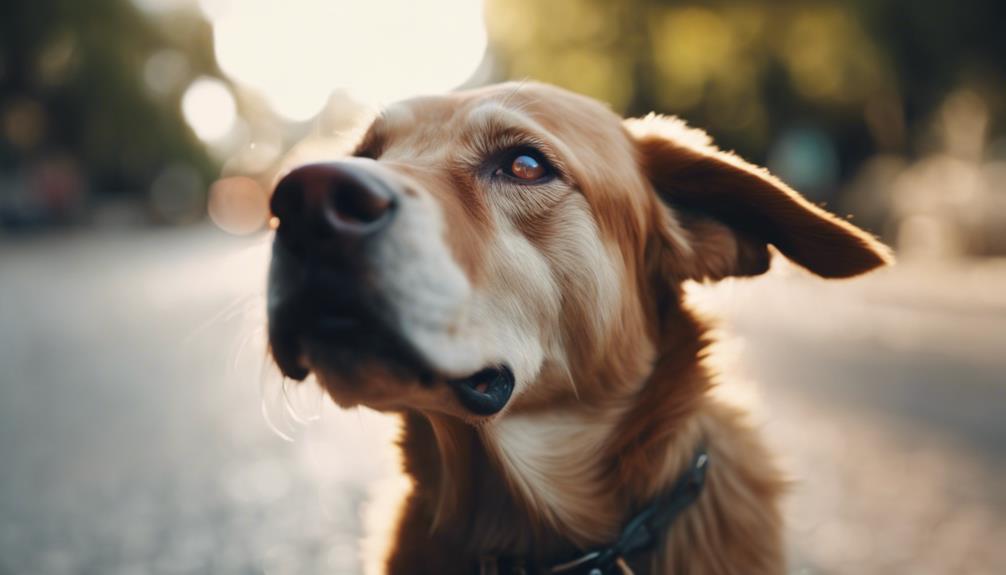With the summer months upon us, the risk of heatstroke in dogs becomes increasingly prevalent. Understanding the gravity of this condition and the preventive measures to safeguard our furry friends is paramount.
From recognizing the early signs to implementing effective cooling techniques, the knowledge and preparedness of dog owners can make a significant difference in preventing heatstroke.
Stay tuned to discover essential tips and strategies to keep your canine companions safe and healthy during the hot season.
Key Takeaways
- Never leave dogs alone in cars to prevent heatstroke.
- Provide shade, rest, and water to avoid heat exhaustion.
- Recognize signs like excessive panting and high body temperature.
- Immediate cooling and medical attention are essential for heatstroke treatment.
Causes of Heatstroke in Dogs
Heatstroke in dogs can be caused by various factors, including being trapped in a hot car, excessive physical activity without adequate rest, shade, and conditioning, physical impairments leading to heat intolerance, inadequate access to shade and water, and overheating during grooming.
Dogs left in cars during hot weather face a high risk, as do those engaging in strenuous activities without proper breaks. Physical limitations can also contribute to heat intolerance, making it essential to provide appropriate shelter and hydration.
Moreover, overheating during grooming sessions, especially in breeds prone to heat sensitivity, can trigger heatstroke. Recognizing these causes and taking preventive measures is crucial in safeguarding dogs from this potentially fatal condition.
Difference Between Heat Exhaustion and Heatstroke
In understanding the progression of heat-related conditions in dogs, it is essential to distinguish between heat exhaustion and its severe counterpart. Heat exhaustion is a precursor to heatstroke and can escalate if not addressed promptly. Dogs maintain a higher body temperature than humans, typically around 103 degrees F. Signs of heat exhaustion include excessive panting, lethargy, reluctance to move, and an increase in body temperature.
Heatstroke occurs when a dog's thermoregulation fails, leading to a core body temperature exceeding 105 degrees F. Dehydration often accompanies heat exhaustion. Recognizing these differences is crucial for early intervention and preventing the potentially fatal consequences of heatstroke in dogs.
Signs and Symptoms of Heatstroke in Dogs

Recognizing the signs and symptoms of heatstroke in dogs is crucial for prompt intervention and preventing serious health complications. Some common signs to watch for include a body temperature over 105 degrees F, collapse, high heart rate and respiratory rate, diarrhea, drooling, or vomiting, and disorientation. Early recognition of these symptoms can help in providing timely care to your furry friend and potentially save their life.
| Signs and Symptoms of Heatstroke in Dogs | ||
|---|---|---|
| Body temperature over 105 degrees F | Collapse | High heart rate and respiratory rate |
| Diarrhea, drooling, or vomiting | Disorientation |
Dog Heatstroke First Aid Treatment
Understanding the vital steps in providing immediate care can significantly impact the outcome when addressing heat-related emergencies in dogs. It is crucial to act swiftly and effectively to help a dog suffering from heatstroke.
Here are five essential first aid treatment steps to follow:
- Bring the dog inside immediately if symptoms of heatstroke are present
- Cool the room with air conditioning or a fan
- Seek immediate medical attention if the dog is non-responsive or has labored breathing
- Administer cooling techniques such as using cool, not cold, water-soaked towels
- Do not use ice, ice packs, or alcohol for cooling as it may lead to overcooling
Prevention of Heatstroke in Dogs

To safeguard dogs from heatstroke, proactive measures must be taken to mitigate the risks associated with excessive heat exposure. Prevention is key in ensuring the well-being of our canine companions during hot weather. Here are some essential tips to prevent heatstroke in dogs:
| Prevention Tips | Description |
|---|---|
| Avoid Excessive Exercise | Limit strenuous activities during peak heat hours and provide ample rest and water breaks. |
| Provide Shade and Water | Ensure access to shaded areas and plenty of fresh, cool water at all times to prevent dehydration and overheating. |
| Never Leave Dogs in Cars | Even for short periods, cars can quickly reach dangerous temperatures, leading to heatstroke. |
| Grooming in Moderation | Avoid over-grooming during hot weather as it can contribute to heat buildup in dogs' bodies. |
Treatment and Long-Term Effects of Heatstroke
To effectively address the treatment and potential long-term consequences of heatstroke in dogs, swift action and comprehensive care are essential following an episode of heightened core body temperature. Proper treatment and monitoring are crucial for the well-being of the affected pet. Here are five key points to consider:
- Immediate veterinary attention is necessary to assess the severity of the heatstroke.
- Intravenous fluids and medications may be required to address symptoms and stabilize the dog.
- Long-term effects can include organ damage, neurological issues, and increased susceptibility to future heat-related incidents.
- Monitoring for any signs of complications post-treatment is essential for the dog's ongoing health.
- Implementing preventive measures to avoid future heatstroke episodes is paramount for the dog's well-being.
Conclusion
In conclusion, heatstroke in dogs is a serious condition that requires prompt attention and proper care to prevent detrimental effects. Understanding the causes, differences between heat exhaustion and heatstroke, recognizing the signs and symptoms, providing immediate first aid treatment, and implementing prevention strategies are crucial in safeguarding the well-being of our canine companions.
By being proactive in monitoring and addressing potential risks, dog owners can effectively protect their pets from the dangers of heatstroke.




